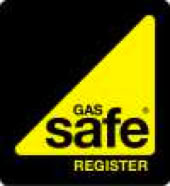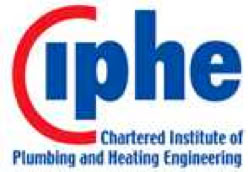
Mike the Boilerman -
Gas Safe Registered boiler and central heating repair technician in west Berkshire

Mike the Boilerman -
Gas Safe Registered boiler and central heating repair technician in west Berkshire
The things that most often go wrong with gas appliances and central heating. Today, this is a fairly short list, but I’ll add to it as I think of more things that go wrong regularly.
Jammed circulating pump:
This is surprisingly common. The central heating pump motor seizes stopping the pump from running, and the hot water produced by boiler water is no longer pumped around the radiators and to the hot tank. The “Grundfos” brand of circulating pump is particularly prone to this and is actually quite easy to free. One needs to remove the large silver screw in the centre of the motor, use a smaller screwdriver to engage the motor shaft to fee it, then replace the screw. I’ve recorded a short video showing how:
The thermocouple:
This is one half of a safety device. It is the sensor that sits in the pilot light flame and delivers an electrical current when hot, holding a solenoid valve open, allowing gas to flow. If the pilot goes out the thermocouple cools, the electricity stops and the gas gets shut off. Thing is, these thermocouples seem to degrade over time, producing less and less electricity. The boiler will spontaneously shut down, and be hard to light again.
A new thermocouple is about £5 to £10, plus, say £100 or so for the visit to fit and test that it is working correctly and safely. Any decent gas engineer will have a selection of 'universal' thermocouples in the van.
The flue fan:
These fail on modern boilers every few years. The boiler will simply fail to start, and will sound different from usual, because the fan isn't running.
New fans vary from about £100 to £200, and take about an hour to diagnose. Then there will be a trip to the spares shop the get a new one and another hour or so to fit it.
Radiators getting hot when heating is off:
I'm getting quite a few questions about this at the moment. There are two completely different ways of piping up and controlling a heating system, and both ways can suffer from this for different reasons. Both will take a bit of explaining but here goes...
1) The old type of heating system has a boiler that is kept hot all the time 'hot water' is selected on the programmer. Hot water from the boiler rises and travels by natural convection up to the hot water cylinder and keeps it warm too. When the heating is turned on as well, a pump starts and draws water from the already hot boiler and pumps it around the radiators. When the house is hot enough, or the heating is turned off, the pump simply stops running. But natural convection can make hot boiler water circulate around the upstairs rads when the pump is NOT on, so a "check valve" is inserted into the pipe feeding the upstairs radiators. This check valve is held closed with a weight or light spring and stops the natural convection occurring, but the pump is able to overcome the resistance when it starts running. Upstairs radiators get hot when the heating is turned of if this check valve fails or has debris lodged in it.
2) The modern heating system has both a room thermostat and a hot water cylinder thermostat. These are temperature-sensitive switches that turn on the boiler when heat is required by either the hot tank or the living space. When the room 'stat calls for heat the boiler fires up and a 'diverter valve' directs the hot water to the radiators. When the cylinder 'stat calls for heat the same thing happens but the diverter valve directs hot water to the hot water tank. When both 'stats are calling for heat the diverter assumes a 'mid position' allowing hot water to flow to both circuits at once. When a diverter (or 'mid-position valve' as it is sometimes called) fails or gets some debris stuck in it, hot water intended for the hot water circuit can leak past into the radiator circuit, making the radiators warm even though the heating is turned off.
Whichever reason is causing radiators to get hot, a drain-down is required to allow replacement of the faulty component, but there is no reason not to cope with the problem by turning off the radiators that are getting hot. No harm will be done.
Radiators NOT getting hot when the heating is turned ON:
Sometimes pump failure, sometimes failure of the motor in the motorised valve. With pump failure, sometimes the upstairs radiators will continue to heat up by natural convection leaving just the downstairs rads cold.
System pressure repeatedly falling to zero:
This pressure gauge on the boiler repeatedly falling and the user needing to 'top up' the radiator system by opening a valve means water is being lost from the system. Adding water using the filling device restores pressure but it slowly falls back to zero again.
Sometimes this is a plain ordinary leak somewhere on the radiator system but often the cause is the pressure relief valve (PRV) 'letting by'. This, in turn, is usually caused by failure of the expansion vessel to operate correctly.
The function of the expansion vessel is to smooth out the wide swings in pressure that would otherwise occur in a seal system as it heats up when ON, then cools down when OFF. It does this using an air cushion inside the vessel. The air in the expansion vessel escape or dissipates as time passes, leading to the system pressure rising too high when turned ON so the PRV opens to discharge a little water to limit the pressure. Then when the system cools, the pressure displayed on the gauge will be lower than the user set it to, or even zero.
The expansion vessel needs to have it's air charge replenished. This is done with an air pump connected to the Schrader valve on the vessel, and it needs to be pumped up to 1.0 Bar. Do this with the pressure relief valve one or a drain tap open to achieve an air pressure of 1.0 bar with the system pressure gauge still reading zero. Then close the PRV or drain tap and add water to pressurise the system as before, but now the problem should be fixed.
A subsequent problem can be that the PRV now fails to close fully, having been operated, and it needs dismantling and cleaning or better, replacing. This can be seen by checking the end of the discharge pipe attached to it. There should be no signs of water. A good way of detecting water discharging intermittently from the PRV is to tie a polythene bag over the end of the discharge pipe and inspect it again a day later.

Freeing a jammed circulating pump
If you like what I write, please Buy me a coffee. Thank you kindly!

Copyright Michael Bryant 2025
Site first published 16th January 2004
Site last updated 13th November 2025
Gas Safe Register 197499, CIPHE registration number 009909L

This website makes use of cookies. Please see my privacy policy for details.